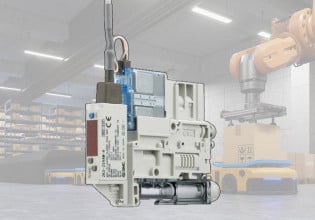Digital Education for Hands-On Manufacturing Skills
Learn about the future of manufacturing education and potential digital solutions to help people gain hands-on skills.
With new technology, manufacturing education is changing. A previous article, A Shift in Manufacturing Education, briefly mentioned how online classes and other trends challenge the way the industry thinks about job training.
This article will focus on the future of manufacturing education and if digital solutions can simulate reality enough to capture hands-on skills.
Online Learning Platforms for Manufacturing Education
Some organizations such as Coursera and EdX.org have developed online education with certificates to verify individual skills. These types of platforms have proven to be useful. Users can search for valuable skills in the job market, then find classes with those keywords on educational platforms online.

A look at some of the courses available on EdX.org. Screenshot courtesy of EdX.org.
After finishing, the user can add the keywords recruiters are looking for to their resumes to increase the likelihood of getting an interview. Some recruitment use digital tools that can become like a keyword search. This strategy can work to get past the first gatekeeper, HR, or the recruiter.
Online classes have had a lot of success and controversy if they are as good as face-to-face education. However, with the current skills gap and education cost, online classes will continue to be a trend.
Educating job seekers in front of a computer might work well for jobs done on screens, but what about hands-on jobs? Hands-on education is also changing.

Universal Robots, UR academy classes demonstrating hands-on manufacturing education capabilities. Image courtesy of Universal Robots.
Apprenticeship programs, boot camps, and other manufacturing-focused education programs offer in person or on the job programs. In August of 2018, the U.S. Government launched Apprenticeships.gov to support this type of education.
Additionally, on “May 11, 2020, the U.S. DOL issued a final rule that establishes a system for advancing the development of high-quality Industry-Recognized Apprenticeship Programs (IRAPs).
IRAPs provide individuals with opportunities to obtain workplace-relevant knowledge and progressively advancing skills. IRAPs include a paid-work and an educational component and result in industry-recognized certifications.”
As the skills gap grows and talent becomes increasingly difficult for many companies to find, there might be another trend in manufacturing education.
STEM Kits and Additional Education Platforms
STEM kits and developer boards such as Arduino are associated with Makers, students, or hobbyists, not engineers. But the trend of using developer boards is evolving. Originally, Arduino was created so design students could build prototypes of their projects. They only had a few months and were not engineers.
A developer board was created that made it possible to have someone with little to no knowledge build an electronic prototype without going back to school for engineering.
Today, companies have created developer boards for industry with common engineering languages such as C programming, MATLAB, and Python to progress microcontroller and sensor applications. Embedded systems and microcontrollers are becoming the building block of much of the modern world. However, learning about them only online is missing a valuable hands-on component.
Fortunately, with the boom of developer boards and online education platforms, remote or at-home courses are becoming more valuable to employers while affordable for the masses.
On Mouser’s website, it says, “Texas Instruments and Mouser Electronics are proud to support the edX online course called The Mechatronics Revolution: Fundamentals and Core Concepts. …. Through several hands-on labs, students will solidify their knowledge of core mechatronics concepts and gain real-world experience in building their mechatronic systems.”
This course is a college-level engineering class taught through Georgia Tech using the TI-RSLK-Mechkit. These types of kits can provide a missing link to online education and might be the start of something bigger. Developer boards add a hands-on component to online classes.
Still, many of the in-demand manufacturing skills involve much larger equipment such as CNC mills that might not be as easy to train in an online environment and a small electronic device. Fortunately, a trend in manufacturing design might provide a new twist on education.
Trends in Manufacturing Design
Digital twins are typically a way to create a production line and run simulations to find any issues before investing the time and money to create it in the real world. Some software also uses feedback loops to update digital twins based on real-world data once an operation has started. These models are accurate enough to train workers or job seekers new skills on a simulated machine.
A user could “walk” around machines, production lines, or whole factories in a digital training environment, seeing and hearing everything. This type of technology could serve as a way to train new employees too.

Digital twinning capabilities in a factory. Image courtesy of Siemens.
However, recreating a factory already in operation without any digital twin might take a large investment. Here again, a manufacturing trend, AR and VR technology might provide a solution.
Weedoo, a company specializing in digital applications, scanned a factory in about three hours. Once a digital environment is made, switches, knobs, gauges, HMIs, and other devices are mapped and programmed into the environment.
Users control themselves in the digital environment similar to a point of view video game character. For example, if a user heard the ambient noise change, they could “walk” to the pressure gauge on the machine, see it is surging, and select a switch to open a vent.
While simple, this exercise could take a user through abnormal situations that might not be possible or safe in a real factory. This technology can show users where everything is and what to do as problems occur.
Professional developer boards, online learning, and realistic virtual training could add value to online learning while providing hands-on experience. It may take time to see how this new type of training will evolve. The future of manufacturing education must change if the industry will address the skills gap in a serious and sustainable way.






